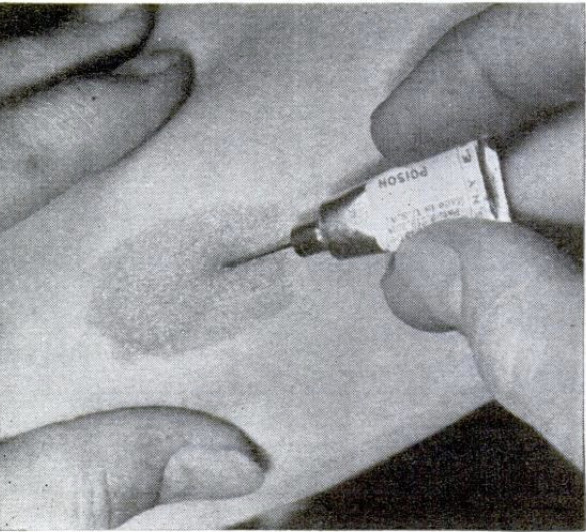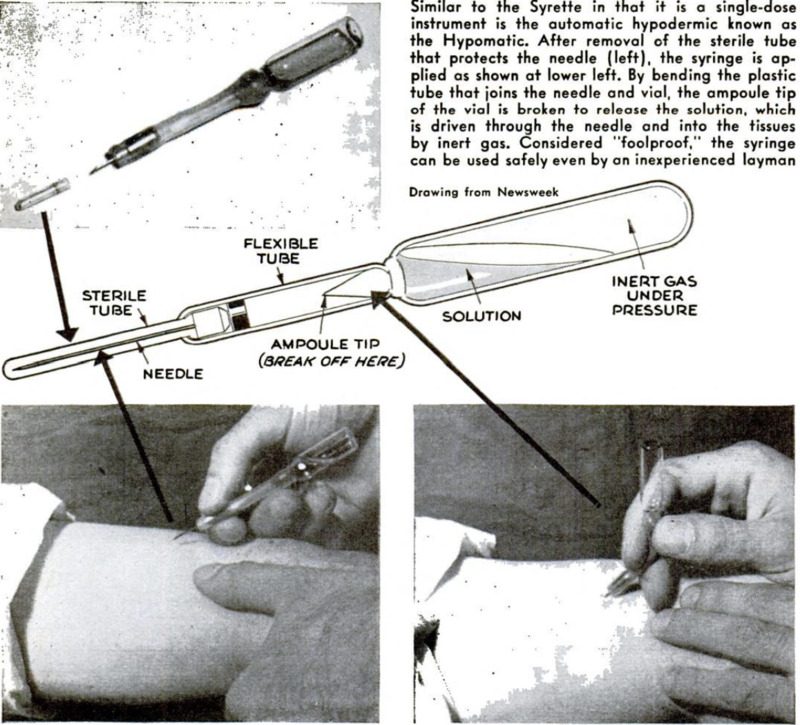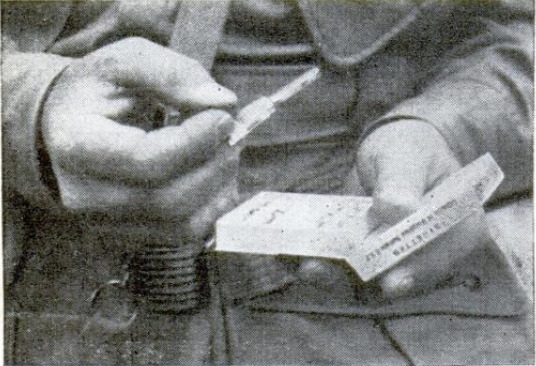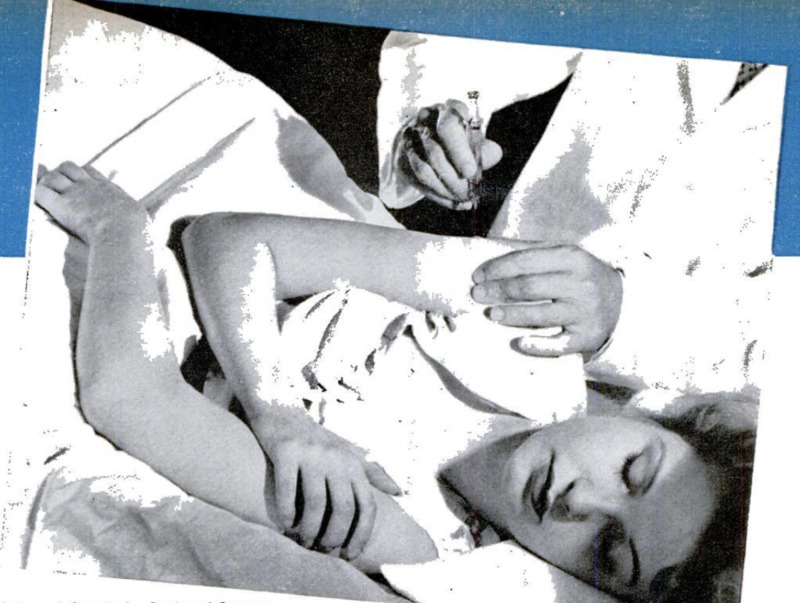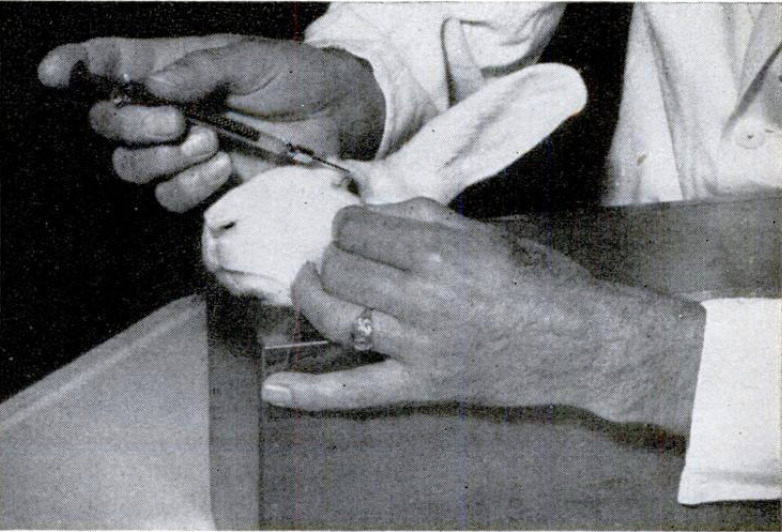-
Title (Dublin Core)
-
Drugs, tools and simplified techniques to eliminate physical pain among fighters
-
Article Title and/or Image Caption (Dublin Core)
-
Title: Pain-killers save lives
-
Subtitle: New drugs and simplified techniques bring relief from suffering among both fighters and civilians as science meets the challenge of wartime needs
-
extracted text (Extract Text)
-
PHYSICAL pain is a disrupting force that
must be eliminated as far as possible
among our fighting men. It is a complex
phenomenon whose analysis has taxed the
best brains in medicine. We all know that,
from an unpleasant sensation, pain may
become intolerable. When it is intense and
long continued, it changes the whole person.
As W. K. Livingston stated in his book
“Pain Mechanisms,” “It interferes with
thought processes, it disturbs sleep, impairs
appetite, undermines morale, and may dis-
organize the functioning of every part of
the body.”
To allay pain, physicians can employ a
vast variety of techniques and many drugs.
These are fitted as closely as possible to the
needs of the case. In some instances, a
doctor is able to remove the cause of the
pain. This, of course, is the ideal treatment.
Very frequently, however, it can’t be done.
‘Then the physician can dull the receiving
mechanisms of the pain sensations, or he
can block the pathways (nerve tracts) by
which the pain stimuli are transmitted, or he
can so affect the brain, by means of drugs,
that it does not perceive or register the
sensation of pain.
The last-named method is the one most
commonly employed. The drugs most effec-
tive in “dulling the brain” against pain are
morphine and its derivatives. It is in this
connection that the new synthetic analgesic,
Demerol, is important. This drug—created
as a substitute for atropine and morphine—
was first introduced in 1939. Its develop-
ment not only adds a valuable agent to our
analgesics, but promises to relieve us of
dependence on foreign countries for opiates.
Precious as are the sulfa drugs and blood
plasma, Demerol and the other pain-killers
must rank first with the man in pain. This
fact, coupled with the difficulties encountered
in sterilizing needles and syringes in fighting
areas, has stimulated development of con-
venient and practical units for quick ad-
ministration of analgesics.
One of these units—meeting the strict
specifications for such equipment—is being
made in quantity by the Schering Corpora-
tion, Bloomfield, N. J. It is called the Hypo-
matic. A “one-shot” automatic injection
instrument, it is a compact unit 4 1/4; inches
long, consisting of a sealed, long-necked
ampoule containing the solution to be in-
jected and also an inert gas under ap-
proximately two atmospheres of pressure.
Its sterile needle is protected by a remov-
able glass tube that hugs the collar of the
needle. Injection is made rapidly and simply,
the gas expelling the analgesic automatical-
ly. It may be used with equal facility and
effectiveness by tank and submarine crews,
airmen, and other fighters far removed from
normal medical stations.
Another single-dose hypodermic unit has
been developed by E. R. Squibb & Sons,
under War Department encouragement. It
is called the Syrette, and consists of a col-
lapsible tube, the neck of which is affixed
to a hypodermic needle.
Found on the wartime list of analgesics
is an old friend—cold—in a thoroughly new
guise. Producing analgesia by freezing,
which employs a spray of ethyl chloride, is
an old technique. It has long been used to
desensitize the skin around sore areas. This
technique has largely been replaced by in-
filtration—the injection of analgesics such
as novocain. But another form of freezing
has been developed and is proving of real
value. It dates back to 1938, when Dr.
Temple Fay, of Philadelphia, sought to
arrest growth of cancer by lowering the
patient’s body temperature. In experiments,
subjects were packed in ice. Their body
temperatures declined. They became drowsy
and relatively insensible. As a treatment
for cancer, “body freezing" proved valueless,
but, as is frequently the case in science, the
experiment which failed in one respect
proved fruitful in another. In this instance,
it was found that freezing relieved intract-
able pain. Dr. Frederick M. Allen, of New
York, used it to develop a surgical treatment
for gangrene of the extremities. He applies
packed ice to the part after constricting it
with a tourniquet. Amputation can then be
made without additional analgesics, and the
patient suffers no pain and virtually no
shock.
No less interesting are the new ways in
which the old and well-established analgesics
are being used. For instance, there is the
recent application of spinal analgesia to
obstetrics to produce painless childbirth. It
is in the form of the so-called continuous
caudal analgesia, which is a new and novel
extension of the technique to deaden the
lower nerve centers of the spinal cord so
that they do not transmit any sensation of
pain.
Analgesics are being used effectively in
psychotherapy in Britain and the United
States. They produce prolonged sleep and
also a mental state not unlike that seen in
hypnosis. The prolonged sleep is applied to
relieve the sufferers of intense emotional
excitement and anxiety. The hypnotic state
is utilized for diagnosis. In a condition of
“half-sleep,” the patient can underctand
and respond to questions. His critical facul-
ties become such that he is inclined to talk
freely about things he ordinarily would sup-
press or would not remember. By means of
this type of hypnosis, the psychiatrist is
frequently able to arrive at the crux of the
patient's difficulties in a shorter time than
‘would be required in other forms of therapy.
-
Contributor (Dublin Core)
-
Iago Galdston (article writer)
-
Parke, Davis and Company (photographer)
-
Language (Dublin Core)
-
eng
-
Date Issued (Dublin Core)
-
1944-04
-
pages (Bibliographic Ontology)
-
120-122
-
Rights (Dublin Core)
-
Public Domain (Google digitized)
-
Archived by (Dublin Core)
-
Lorenzo Chinellato
-
Marco Bortolami (editor)
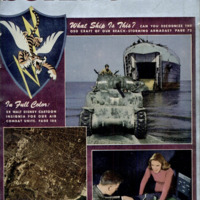 Popular Science Monthly, v. 144, n. 4, 1944
Popular Science Monthly, v. 144, n. 4, 1944

